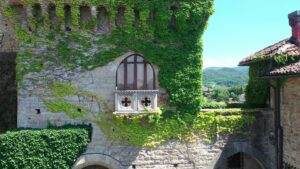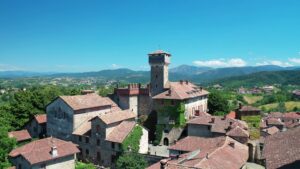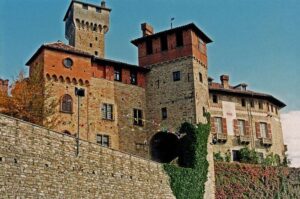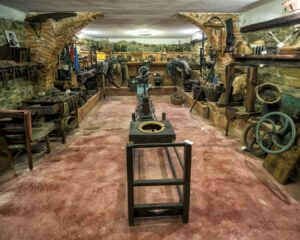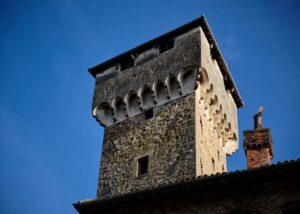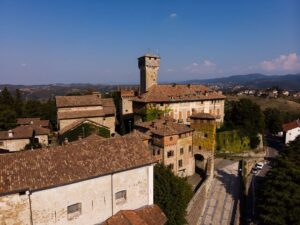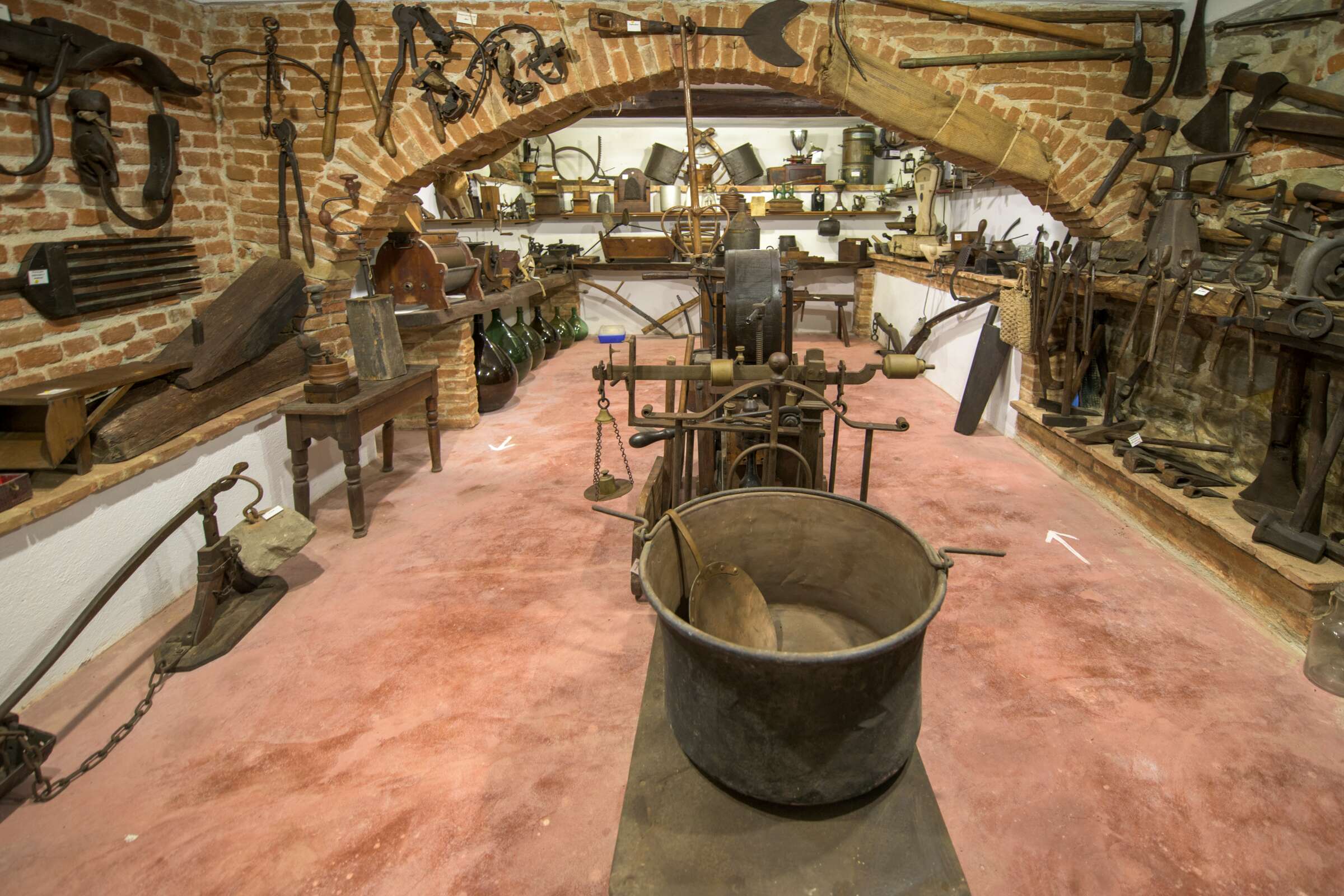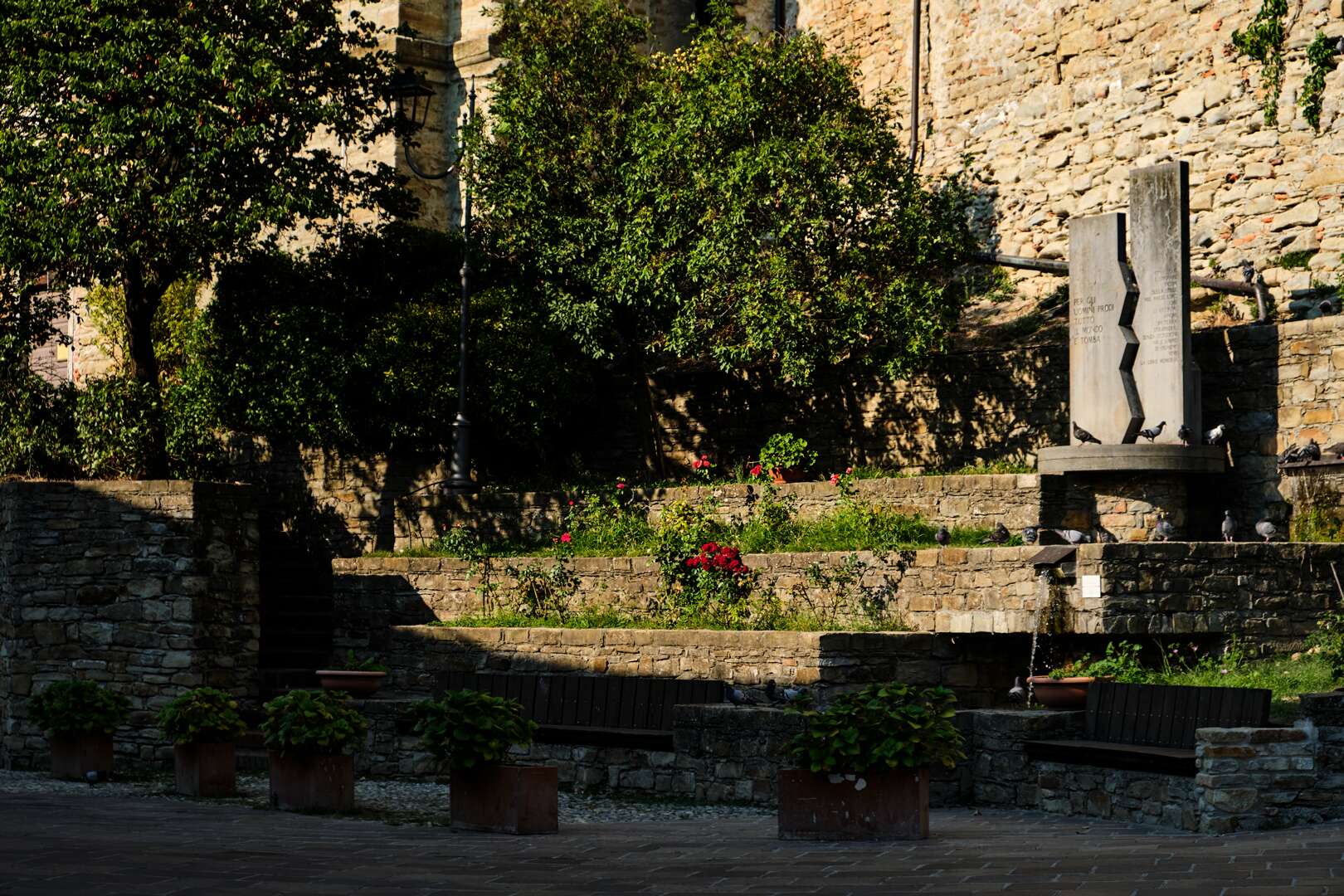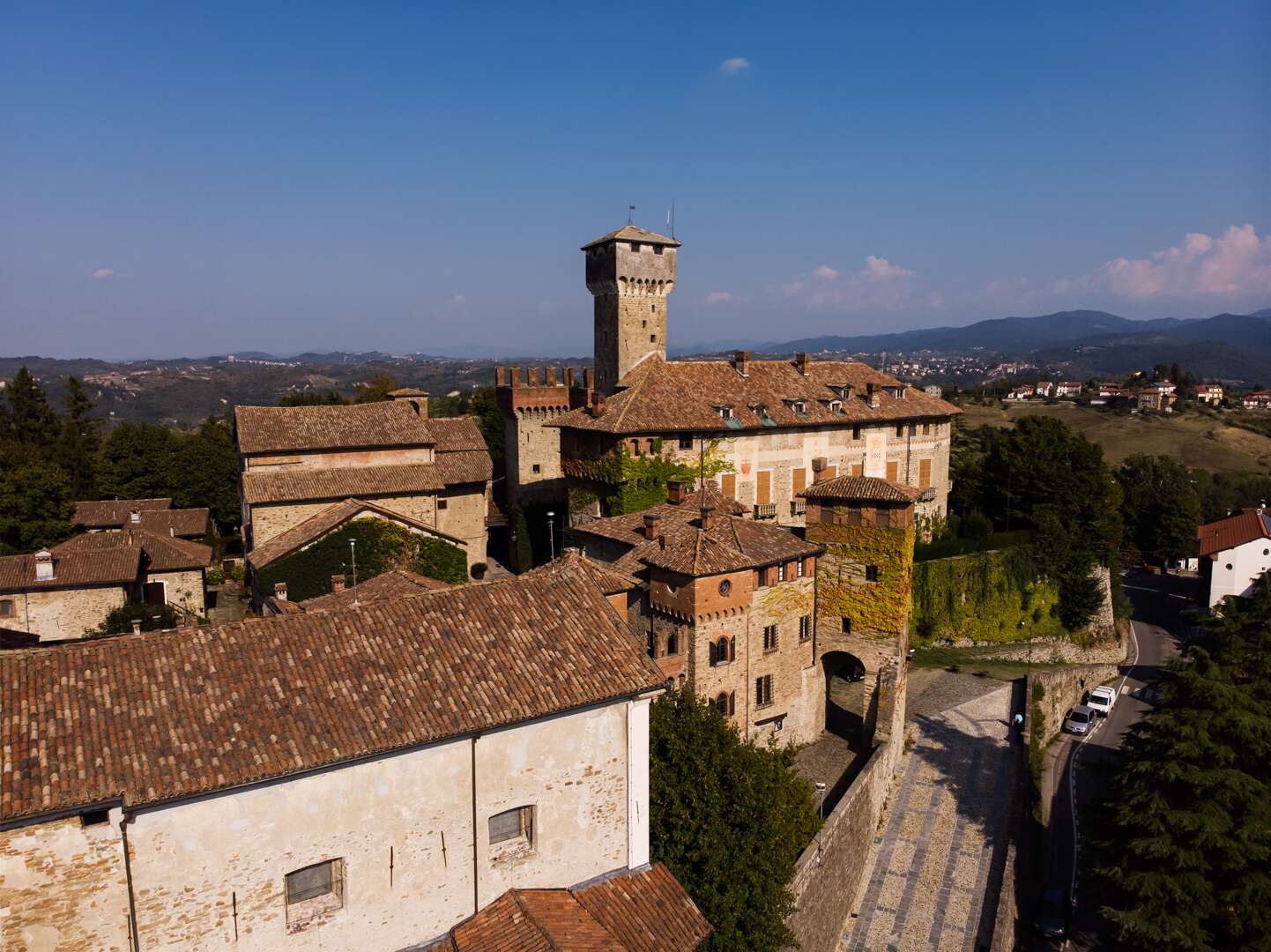The municipality derives its toponym from Taliolus, Talliolus or Taiolus, ancient terms indicating an area of intense deforestation in Lombard times. The monks of Saint Columbanus from the nearby monastery of Belforte, then known as Uxecium, worked there. Granted, in 976, as a feud to the Aleramici by Emperor Otto I, it was owned by the various feudal lords: Malaspina, Cattaneo della Volta, Spinola, Doria, Del Bosco.
During the medieval period it housed the women’s monastery of Santa Maria di Bano, the remains of which can still be seen today on Mount Colma. It was conquered by the military commander of the Republic of Genoa Egidio Di Negro, during the Genoese expansion into Oltregiogo. Later, having entered the orbit of the Duchy of Milan, it was given as a fief to the Gentile family. In 1750, following the marriage of Teresa Gentile to Costantino Pinelli, the fief of Tagliolo passed to the Pinelli Gentile family, current owners of the castle.
The second part of the municipality’s name, “Monferrato,” was added in 1902 at the behest of the then mayor Giuseppe Pinelli to avoid confusion of the name of Tagliolo with other similar ones, such as Tigliole (Asti), Tagliole (Modena) Tiglieto (Savona).The history of Tagliolo opens with a solemn deed drawn up in Genoa on June 19, 1217 when Marquis Ottone del Bosco donated to the municipality of Genoa a number of localities located in the Stura Valley and the middle Orba Valley. However, his name first appears in a charter of 933, when Hugh and Lothair, donated the “curtis Auriola” in the committee of Vercelli. The manu armed conquest of the Orba and Stura valleys accelerated the process of insertion of local communities into the Genoese political-administrative system. The link with the Ligurian city was economic rather than political in nature: the presence of a Bellingerio of Tagliolo, a Nicolino of Rocca (Grimalda) and another Bellingerio of Silvano (d’Orba) on the shores of the Black Sea along the routes favored by the Superba’s maritime trade is in this regard most eloquent.


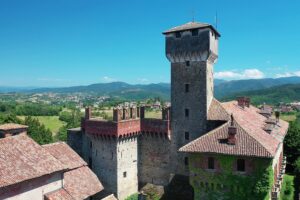



What to see in Tagliolo Monferrato
The ancient village is centralized in the Ricetto, within the walls that also imply the castle, all around the Poggio hillock, following the Morella street and along the Coppa street. According to a document from 1293, three castles had existed in Tagliolo: a castrum novum, a second castrum called “de Droguis” and a third “de Raynis.” The latter two were demolished probably in 1272, during an expedition of the Genoese. At the time of Filippo della Volta (1295) the castle housed 200 armigers.
The castle courtyard overlooks the “Bigatteria,” a building that was once used for raising “bigatts,” silkworms: silk processing was flourishing in the Oltregiogo area, especially in Novi Ligure. Today the venue is used for wedding or business lunches and cultural gatherings.
The transition from a Spartan manor to a lordly castle was implemented with the dynasty of the Counts Gentile. It was the Portuguese-born architect Alfredo D’Andrade who gave it a new life. Author already of the Borgo Medioevale di Torino and the Castello del Valentino, restorer (according to the canons of the time) of the Castells of Pavone, Verres, Fenis and others, commissioned by Marquis Pinelli Gentile, he designed the reconstruction of the castle based on his countless studies of medieval architecture one can admire the towers, the Ghibelline battlements, the little balconies and coats of arms frescoed on the facade, the red and white herringbone frieze… Reconstruction also touched the village.
The confraternity of the Disciplinati di San Nicolò was born in the 15th century and had its first headquarters on the Poggio di San Nicolò, but the construction of the church we see today, near the entrance to the Castle, dates back to the 17th century and is in the traditional forms, with its gabled facade, rectangular portal, three windows at the top in the manner of a triple lancet window, and the image of St. Nicholas. The first altar is dedicated to St. Charles Borromeo and contains a wooden processional statue by Ovada sculptor Emanuele Giacobbe, known for some marble statues at the Staglieno cemetery in Genoa. The second altar is dedicated to Our Lady of the Rosary, while on the opposite side is a Crucifixion -attributable to Guglielmo Caccia known as “Il Moncalvo” (1568-1625).
The bell tower, built in the early 19th century, is a technically bold and elegant work; the flight of internal stone steps, set directly into the masonry, deserves special attention.
Much attention should be paid to the country chapels: St. Roch, St. Benedict, St. Defendant, St. Joseph, and St. Mary of Grace, all built from the early 16th century onward.
Between the 12th and 15th centuries, on the heights of Mount Colma stood the Cistercian women’s monastery of Santa Maria di Bano. Those were the centuries of greatest expansion of the Cistercians who, from Tiglieto, the first monastery they built in Italy, had spread especially in Liguria, founding houses not only for male followers. At Bano there were nuns belonging to the leading families of the Genoese aristocracy and their number, in the best years, exceeded 40 professed nuns. The monastery was abandoned in the 15th century. As the centuries passed, only a few butts of the wall remained visible, but ancient documents and local legends prompted a group of enthusiasts, led by archaeologist Enrico Giannichedda, to carry out some excavation campaigns that have given us back the true meaning of monastic life. Currently, work is being done to bring the Bano monastery and its history back to life as much as possible.
Lorem ipsum dolor sit amet, consectetur adipiscing elit. Ut elit tellus, luctus nec ullamcorper mattis, pulvinar dapibus leo.
Lorem ipsum dolor sit amet, consectetur adipiscing elit. Ut elit tellus, luctus nec ullamcorper mattis, pulvinar dapibus leo.
Lorem ipsum dolor sit amet, consectetur adipiscing elit. Ut elit tellus, luctus nec ullamcorper mattis, pulvinar dapibus leo.
